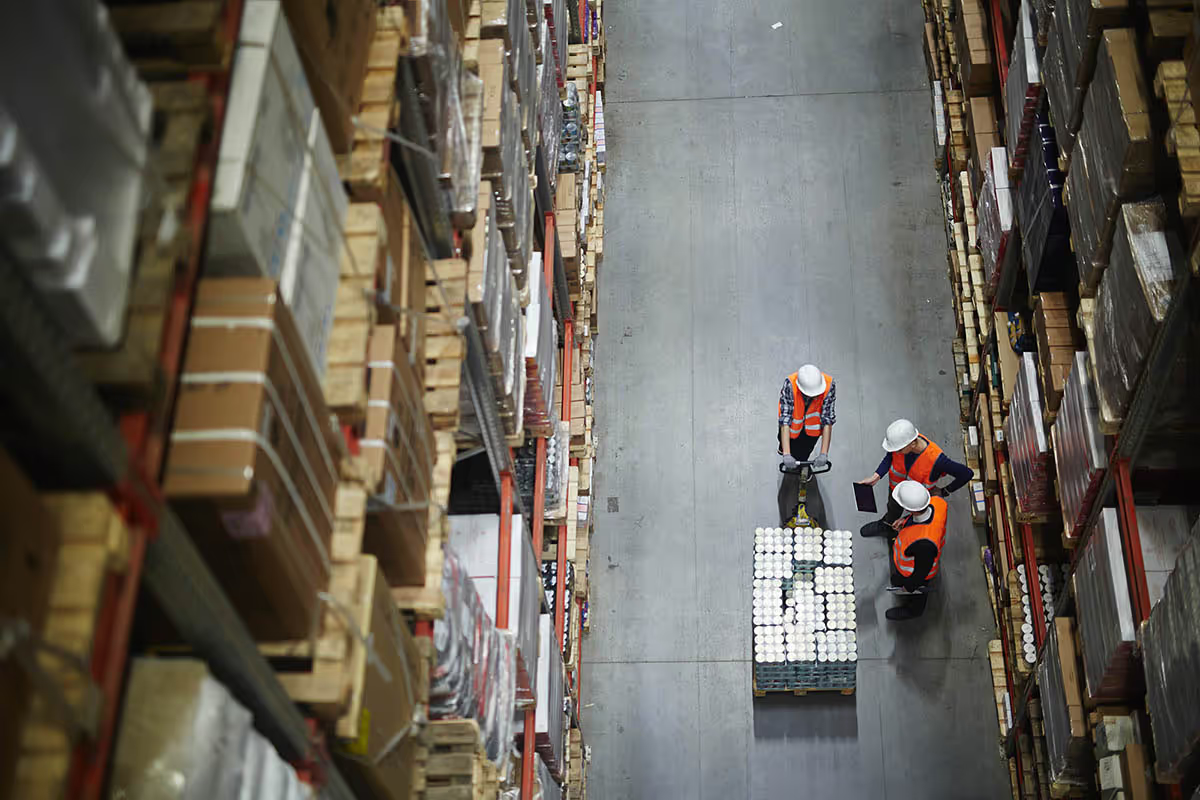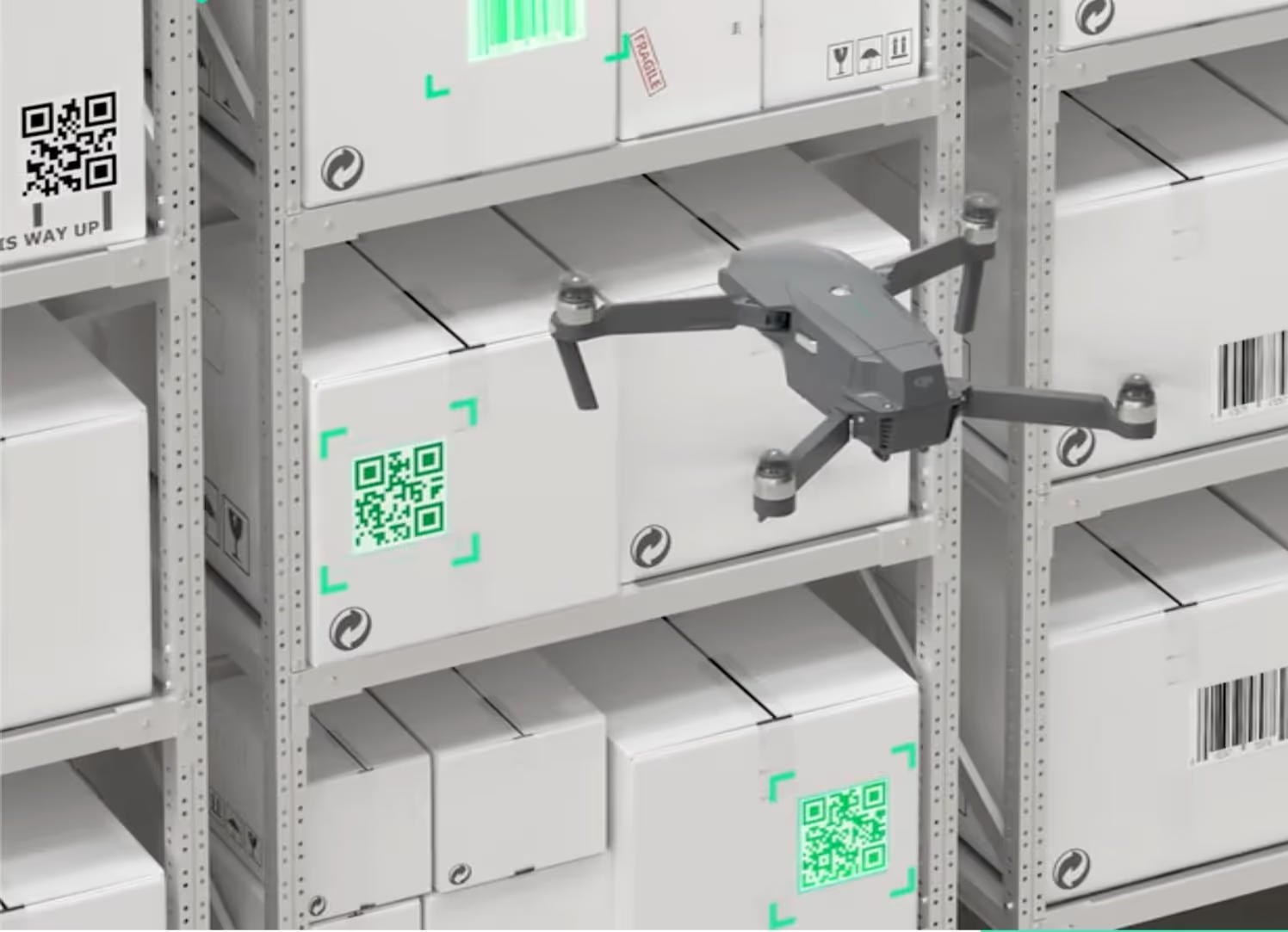Your Warehouse Problems Are Today's Problems. AI Is Today's Solution

AI in the supply chain isn't a future concept. It's a practical solution for solving the expensive, real-world warehouse problems you face right now.
Inventory distortion—a mix of stockouts and overstock—costs retailers an estimated $1.1 trillion globally, according to a study by IHL Group. This is not a future problem. This is a today problem.
Gartner's latest report on top supply chain technology trends provides a roadmap for addressing these issues. They fall into two categories: Intelligence and Connectivity. This is a practical guide to what these trends mean for your operation.
Intelligence Trends: From Guesswork to Certainty
1. Agentic AI
An agentic AI system can plan and act to meet goals, but it cannot make a trustworthy decision with old or inaccurate information.
Our AI co-pilot gets the sensory input it needs from the warehouse floor. We deliver the precise, up-to-the-minute location and status of inventory. This ground truth is the foundation for any intelligent action, from stock consolidation to replenishment.
- The Takeaway: Think of AI not as a replacement for your team, but as a co-pilot that needs trustworthy, real-time data to make smart decisions. The quality of its actions depends entirely on the quality of its sight.
2. Autonomous Data Collection
Manual inventory counting is slow and expensive. Most warehouses operate at around 95% inventory accuracy, and each percentage point below 100% can cost millions in lost sales and operational waste.
Our drone and MHE-based inventory monitoring technology automates inventory counts to achieve 99.9%+ accuracy. This eliminates the need for manual cycle counts and frees up your team for higher-value work.
- The Takeaway: The goal isn't just to count faster; it's to shift from periodic, manual audits to a state of continuous, proven inventory accuracy.
3. Decision Intelligence
Better, faster decision-making is the primary driver of technology investment. This requires a constant stream of reliable data.
The high-quality, real-time data from our autonomous systems is the fuel for any decision intelligence platform. Accurate, continuous inventory data leads to more effective decisions about stock levels, order fulfillment, and resource allocation.
- The Takeaway: Your data is only valuable if it drives action. The right technology turns a constant stream of operational data into clear, high-quality decisions.
4. Intelligent Simulation
A "digital twin" allows you to model and optimize your warehouse. An accurate simulation is impossible without accurate data.
Gather AI provides the foundational, real-time data layer on inventory location and quantity needed to build and maintain a high-fidelity digital twin. This ensures that your simulations are based on reality, not estimates.
- The Takeaway: A digital twin shouldn't be a static model. It should be a live, dynamic reflection of your warehouse that allows you to test ideas against reality, not assumptions.
Connectivity Trends: Unifying Your Operation
5. Augmented Connected Workforce
The U.S. Bureau of Labor Statistics projects about 1.9 million job openings in transportation and material moving each year for the next decade. Labor efficiency is critical.
Our technology directly supports an augmented workforce. By automating the repetitive task of inventory counting, we free up your team to focus on complex activities like problem-solving and process improvement.
- The Takeaway: The best technology doesn't replace your people. It elevates them by automating low-value tasks and empowering them with the insights to solve high-value problems.
6. Polyfunctional Robots
The precise inventory data gathered by our platform can direct other robots, like Autonomous Mobile Robots (AMRs), for put-away, picking, or replenishment. This creates a more cohesive and intelligent automated warehouse.
- The Takeaway: The future isn't about single-task machines. It's about creating an ecosystem where different technologies work together, powered by a shared, accurate view of the warehouse.
7. Ambient Invisible Intelligence
This trend often involves smart tags and sensors for tracking. Gather AI offers a powerful, tagless alternative.
Instead of relying on sensors, our AI vision platform creates a continuously updated digital picture of the warehouse. This provides deep, real-time visibility without the need to tag individual assets.
- The Takeaway: Achieving total visibility doesn't have to mean tagging every item. AI vision offers a more scalable and flexible way to create an intelligent environment.
8. Multimodal UI
A multimodal user interface (UI) lets people interact with systems in more intuitive ways.
Our platform is a comprehensive multimodal UI for intralogistics. Its digital twin provides an intuitive, map-based view of the warehouse that goes beyond simple text or tables, making inventory data deeply contextual and visual.
- The Takeaway: Interacting with your warehouse data shouldn't be confined to spreadsheets. A visual, map-based interface makes complex information intuitive and actionable for your entire team.
The Time to Act Is Now
These Gartner trends are not future predictions. They are a roadmap for solving the challenges warehouses face today. With a proven ROI in less than six months and a 5x improvement in productivity, Gather AI delivers a practical path forward.
Waiting to adopt AI is no longer a viable strategy. The technology is here, the value is proven, and the risk of inaction is falling behind. The time to build a more efficient, visible, and intelligent warehouse is now.
Transform your warehouse.
No infrastructure changes necessary


-min.avif)


.webp)